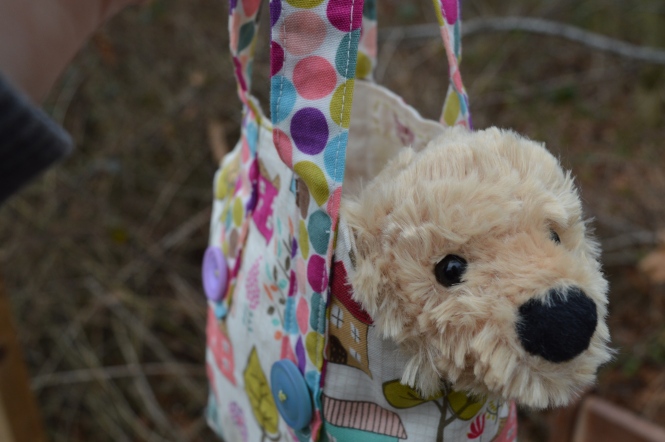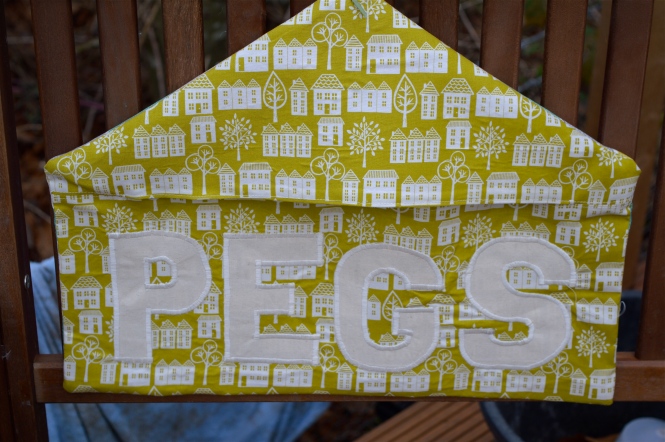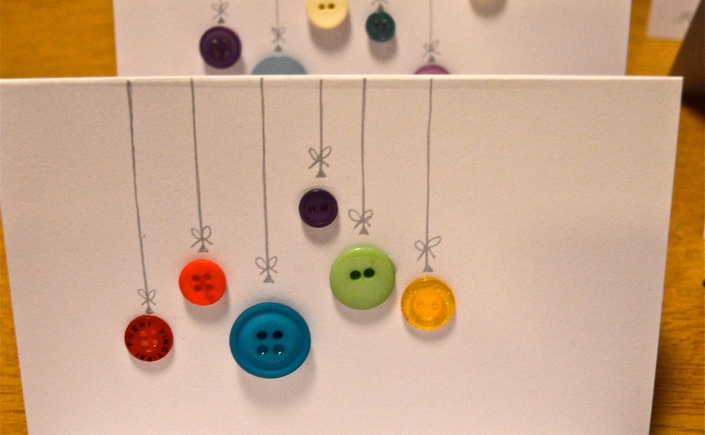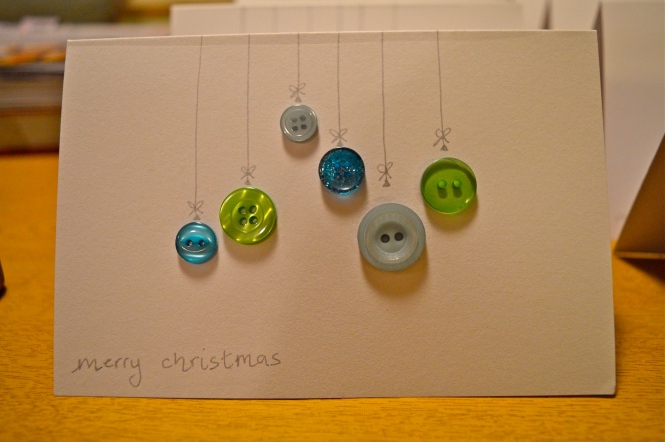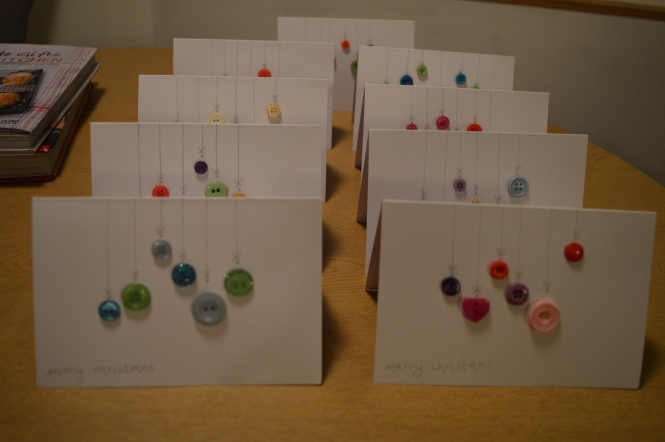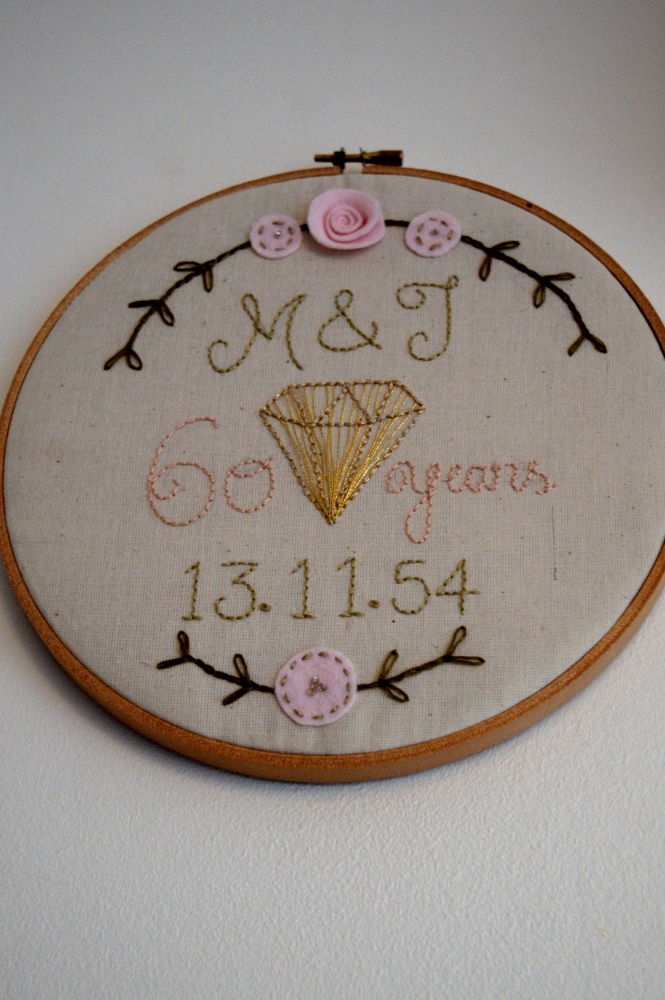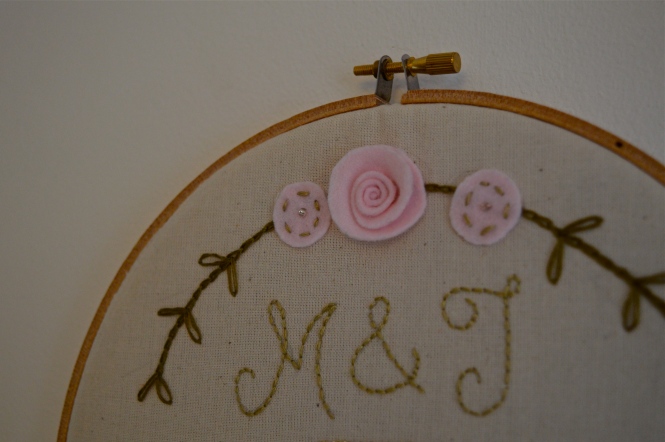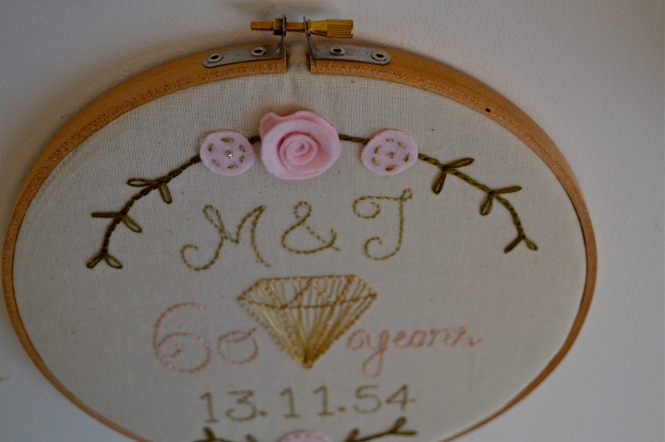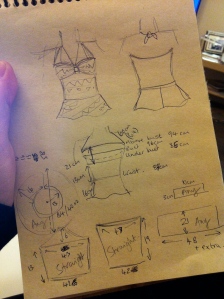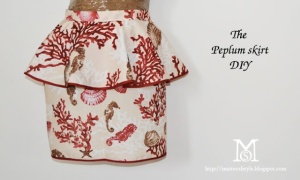Isn’t this skirt just so tweet? I mean…, sweet? And it’s really easy to make in just a couple of hours out of a half metre of cotton.
I have this crazy idea that if/when we are lucky enough to have kids I will sew loads of adorable clothes for them. As it’s hard enough to find the time to sew now let alone with kids around, I’m not quite sure how realistic this is… Still, our niece’s birthday felt like a good time to get practicing.
I made the skirt along similar lines to one I made for myself, High Waisted Skirt minus the lining and adding a button clasp and knot at the front. I used interfacing for the front section of the waistband and threaded a little elastic through the back part hoping for a nice fit.
See Skirt tutorial below.



“Bird Swing” fabric by Michael Miller
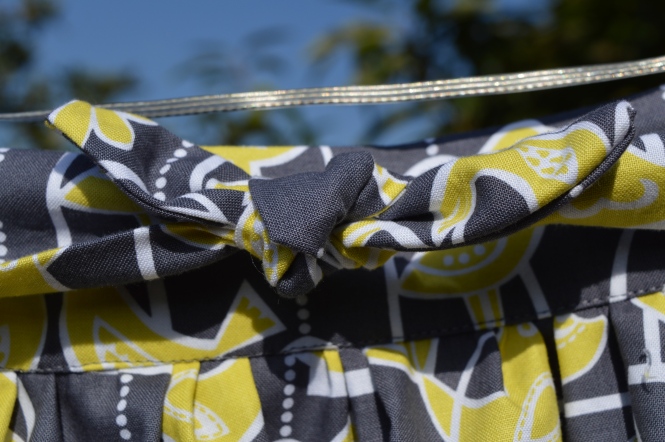
A little knot to add detail at the front. I had intended more fabric but managed to make it work.


The button fastening could have been neater but I’d never tried this before.
Back view, elasticated waistband.

I apologise that this tutorial has no pictures but it’s simple enough to follow this step by step guide providing you have some basic machine sewing skills. The skirt measurements are for a toddler age 2-3 but can easily be enlarged.
You will need:
- 1/2 metre of cotton fabric
- Matching Thread
- 25cm Elastic, about 2cm wide
- Button
- Interfacing
1. Cut out your pieces from the fabric as follows:
2x rectangle 72cm x 25cm (skirt)
2x rectangle 37cm x 12cm (waistband)
2x rectangle 37cm x 10cm (bow, make shorter if only a knot is desired)
1x rectangle 3.5cm x 37cm (button fastening)
The diagram below shows how these pieces can be cut from your half metre fabric. Each piece (apart from fastening) allows for a 1cm seam. It’s a squeeze but very minimal wastage.
 And, don’t forget –
And, don’t forget –
1x rectangle of interfacing 37cm x 12cm or just a little smaller (front waistband)
2. Pin together skirt pieces, right sides facing. Sew along the edges to form seams, leaving 5cm open at the top of one side for the fastening. Press seams open, including section left open.
3. Hem the section that has been left open. Sewing on the right side of the fabric, sew from the top edge of the skirt down one side of the open section, across the seam (sew back and forth for extra strength here) and back up the other side to the top edge of the skirt. This is very like sewing a zip, except without the zip!
4. Hem skirt. (Alternatively this can be done last).
5. Gather the top edge of the skirt using running stitch.
6. Take one of your bow rectangles. Fold in half, right sides facing and pin. Sew along the pinned edge leaving a 1cm seam. Leave one end open and sew the other closed at a 45 degree angle. Turn right way out and press. Repeat with second bow piece.
IMPORTANT: If using patterned fabric, when you come to tie your bow together you want both pieces to show the pattern the same way up with the two points of the fabric sloping down and away from each other. (See image below) When sewing second bow piece, make sure that you sew the correct end shut as this will determine whether it looks right or not.

7. Take one of your waistband rectangles and press interfacing to the wrong side of the fabric. This is now the front section which we will label A.
8. Fold both waistband rectangles in half lengthways and press.
9. Take the second waistband rectangle (without interfacing). This is the back waistband which we will call B. Lay it on your work surface reverse side up. Tack one end of your elastic in place on the LEFT side (opposite to where you intend to fit the fastening). Tack it to the reverse of the fabric within 1 cm of the edge and ensure that the elastic sits just below the crease of the fabric where you have just pressed it.
10. Now take waistband A. Lay it down on your work surface, right side up. Take one bow piece and tack it in place on the LEFT side of the waistband (opposite to where you intend to fit the fastening). Tack it to the right side of the fabric within 1 cm of the edge and ensure that it sits just below the crease of the fabric where you have just pressed it.
11. Pin waistband sides together, right sides facing, matching the creases in both sections. Sew along the edge where you have just attached the elastic and bow piece to form a seam. Press seam open. (You may wish to secure the elastic in place by sewing it firmly to the seam with a zig zag stitch)
12. Take your joined waistband and press a 1cm seam along the top and bottom edge.
13. Make your button fastening by taking the smallest rectangle and folding it in half lengthways, right sides facing. Sew along the long edge leaving a 5mm seam. Trim the excess if necessary and turn inside out to form a long thin strip. Press flat. Fold strip in half and open again. Fold both ends downwards towards the middle so that they meet and lie parallel to each other leaving two 45 degree folds forming a point at the half way mark. (See below) Sew a straight line as marked on the diagram in red.

14. Open your waistband, right side up. Tack the second bow piece to the open end of waistband A in the same way as before, tacking on the right side of the fabric. Turn waistband over, to the reverse side. Take the fastening piece you have just made and tack it to the lower half of the open end of waistband B leaving an opening large enough for your button (but not so large it will slip out). You will need to trim away the excess.
15. With the waistband still reverse side up and open, take the gathered skirt. You will need to attempt this stage working on one side at a time, working from left to right. Pin the edge of the skirt you left open to the open end of waistband A making sure to match up the middle seams of skirt and waistband pieces. The skirt should overlap the waistband by about 2cm. Pin one side of the skirt to waistband A, ensuring the gathers are evenly spaced and securing the pins high up to avoid getting caught during sewing. Once you have done one side, you should then be able to see how to move the fabric around so that you can do the same with the other side. Again, match the open end first the pin the gathers in place.
IMPORTANT: Skirt should be pinned right side up onto the reverse side of the waistband ready for when the waistband is folded down over the top edge of the skirt.
16. With the skirt inside out, sew one long seam along the bottom of the waistband on the right side of the fabric. This will be the inside of the waistband.
17. Remove your pins and fold down the waistband, covering the rough top edge of gathered skirt. Pin in place. Turn your skirt right way out. Sew another long neat line of stitching along all the long edge of the waistband securing the skirt in place. You are nearly finished!
18. Hook out the elastic, this isn’t hard to do, and pull it so that it reaches the open edge of the waistband. Tack it securely in place before sewing the end of the waistband shut. Now sew the other end of the waistband shut and remove any visible tacking.
19. Sew on a button to finish your fastening. It should be big enough, and placed in the right place to hold the fastening shut.












